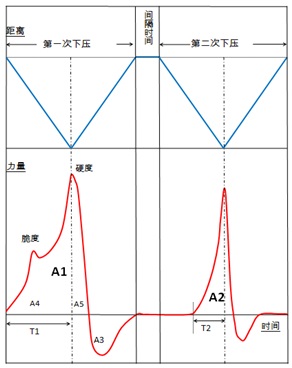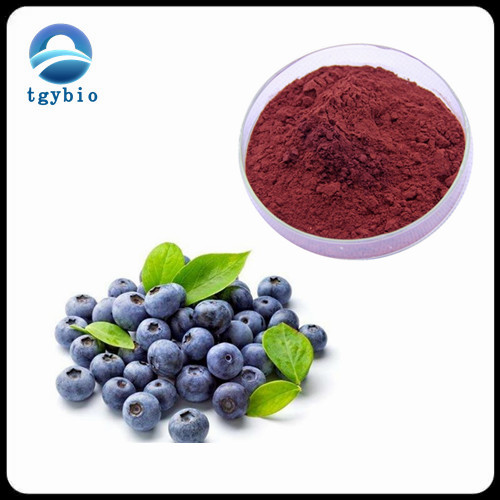How to analyze texture analyzer data?
Are you still worrying about data analysis after completing the texture test? Share your analytical knowledge of TPA test results with you.
First, let's take a look at what is a TPA test!
The TPA texture analysis method was established around 1967 and is suitable for general-purpose texture analyzers. The TPA texture test, also known as the two chewing test, is mainly to simulate the chewing movement of the human mouth, compressing the solid semi-solid sample twice, testing the connection with the microcomputer, and outputting the texture test curve through the interface.
The full texture test indicators are as follows:
1. Sample height: Automatic measurement of sample height
2. Hardness: The maximum force value in the first pressing section
3. Fracturability: Small peaks before hardness
4. Adhesiveness: A3 area
5. Springiness: T2 / T1
6. Chewiness: Adhesiveness x Elasticity = A2 / A1 x Hardness x Elasticity
7. Gumminess: A2 / A1 x hardness
8. Cohesivensss: A2 / A1
9. Resilience: A5 / A4
TPA line explanation :

Full texture analysis (TPA) noun explanation
Hardness:
An indicator of the most direct response taste, in the texture profile analysis, directly affects chewiness, Chewiness and Cohesiveness.
Fractionability:
It is unique to samples with a crisp outer shell (outer skin). Most samples cannot measure this parameter. Generally, if this parameter cannot be measured, the software will automatically hide it.
Adhesiveness:
After the sample is subjected to pressure deformation, if the surface of the sample is sticky, a negative force will be generated. In the food field, it can be interpreted as a sticky mouthfeel.
Springiness:
The height at which food can recover between the end of the first bite and the beginning of the second mouth.
Chewiness:
Chewability is defined as the adhesive x elasticity. It can be interpreted as the energy required to chew solid food. It is difficult to measure accurately because chewing involves compression, shearing, puncture, comminution, tearing, cutting, etc., and is also related to oral conditions (saliva secretion, body temperature). This parameter is mainly used in the description of the solid, semi-solid mouthfeel.
Gumminess:
Adhesion is defined as hardness x cohesion. One of the characteristics of semi-solid foods is low hardness and high cohesion. Therefore this indicator should be used to describe the taste of semi-solid foods.
Cohesiveness:
Cohesion is defined as the ratio of the first compression to the second compression positive force area.
Tensile strength is a manifestation of cohesion. If a better sample is condensed, the display probe is also easier to keep clean. Cohesion is usually tested as a lesser parameter than brittleness, chewiness and adhesion.
Resilience:
Toughness is a measure of how a sample recovers deformation, including both speed and strength.
Defined as the ratio of the area before the deformation target to the area after the deformation target when the first depression is applied. Attention should be paid to the recovery of the sample during the measurement. Generally, a slower test speed is used to achieve sufficient time for the sample to recover. It also ensures the accuracy of this feature.
The easy-to-use, intelligent software is very important for the data analysis of the TPA test. The Paulson software curve and test results are displayed on one interface at the same time. Test data such as force, time, distance, and sample height are simultaneously displayed to the software during the test. The software page is adjustable in English and Chinese. It is easy to use and easy to use. When analyzing data, you don't need to write another analysis program. Users can directly check the required parameters and the software can automatically calculate the result. The resulting data and curves can be exported to Excel documents and images. There are a variety of test methods included, including: single test, viscosity test, full texture analysis test (TPA), relaxation test, attenuation test, cycle test and so on. Escort your experiment!
Welcome to Paulson!
[About Paulson]
Shanghai Baosheng Industrial Development Co., Ltd.
Website: http://
After sales service
Sales consultation
Online QQ consultation 3011823639
E-mail:
Address: No. 1108, Rongmei Road, Songjiang Industrial Zone, Shanghai
telephone / fax
Fruit Powder
Fruit powder is made from 6-7 mature and fig or fig dried fruit by raw material processing, squeezing juice, filtering, clarifying, concentrating, spray drying, cooling, packaging and other steps.
Key points of production process:
Selection of raw materials: select 6-7 mature and fresh figs or dried figs. Raw material treatment and pressing for juice: wash the raw materials, add materials according to the proportion of 1kg water plus 1kg fruit, or 1kg dried fruit plus 5kg water, put them into a stainless steel pot, heat them to 85-90 ℃, keep them for 20-30 minutes, then stop heating, stand for 24 hours, and press for juice. Filtration and clarification: it is filtered by a screen filter, and then natural clarification or enzyme clarification. concentrate; Atmospheric pressure concentration and vacuum concentration can be adopted. It is concentrated under normal pressure in a stainless steel double-layer pot, and the heating steam pressure is 2.5kg/cm2. In the concentration process, pay attention to stirring, accelerate water evaporation, prevent coking, and concentrate to make the solid reach 28%. Each concentration should not be fed too much, and the time should be 40 minutes. Vacuum concentration, concentration under reduced pressure and lower temperature. Heating, steam pressure 1.5kg/cm2, temperature 50 ℃.
Spray drying: high pressure spray equipment was used to spray the dried fig juice concentrate. The feeding temperature was 50-60 C, the working pressure of the high pressure pump was 180 kg / cm, the dry additive paste powder was added 0.5%, the air inlet temperature was 120 C, and the outlet temperature was 75-78 C. Cooling and packaging: the dried fig powder is cooled quickly, and then packaged and sealed.
For Example: Blueberry Juice Powder
In addition to conventional sugar, acid and VC, blueberry fruit is rich in VE, VA, VB, SOD, arbutin, protein, Anthocyanin, edible fiber and mineral elements such as K, Fe, Zn and ca. According to the analysis and determination of 14 varieties of blueberry fruits introduced from the United States, the content of anthocyanin pigment per 100 grams of blueberry fresh fruits is as high as 163 mg, protein 400-700 mg, fat 500-600 mg, carbohydrate 12.3-15.3 mg, vitamin A as high as 81-100 international units, vitamin E 2.7-9.5 micrograms and sod5.39 international units. Vitamins are higher than other fruits. Trace elements are also high, with 220-920 micrograms of calcium, 98-274 micrograms of phosphorus, 114-249 micrograms of magnesium, 2.1-4.3 micrograms of zinc, 7.6-30.0 micrograms of iron, 0.8-1.2 micrograms of germanium and 2.0-3.2 micrograms of copper per gram of fresh fruit.
It is precisely because blueberry fruit is rich in nutrients. It is a nutritional and health fruit with high amino acids, high zinc, high calcium, high iron, high copper and high vitamins. It not only has good nutrition and health care function, but also has the functions of preventing brain nerve aging, strengthening heart, anti-cancer, softening blood vessels, enhancing human immunity and so on.
Health care function
Blueberries can delay memory decline and prevent heart disease, so they are regarded as super fruits. The US daily health news reported that recent research has added a good reputation to super fruit. Eating more blueberries or drinking blueberry juice can help prevent colon cancer.
The study found that blueberries can play this role because blueberries and other fruits contain a natural compound called pterostilbene, which helps prevent pre cancer damage to the body. Pterostilbene is an Antioxidant and anti-inflammatory agent, which is found in blueberries and blackberries.
Blueberries contain a lot of purple components, anthocyanins.
Blueberry fruit can significantly enhance vision and eliminate eye fatigue; Nourish skin; Delaying brain nerve aging; It has therapeutic effect on capillary disease caused by diabetes. Enhance cardiac function; Prevention of Alzheimer's disease and many other medicinal values.
Anthocyanins in blueberry fruit are very powerful antioxidants, which can help prevent the formation of plaque in arteries and a variety of cancers (folic acid prevents cervical cancer, etc.), reduce the possibility of cancer, reduce heart disease and delay aging.

Fruit powder, Fruit Juice Powder, Watermelon Juice Powder
Xi'an Tian Guangyuan Biotech Co., Ltd. , https://www.tgybiotech.com